- +94777315384
LOCATION
Sri Lanka is a teardrop-shaped island in the Indian Ocean just below the Southern tip of India, and lying North of the equator. (Latitude 5° 55. to 9° 50. north, longitude 79° 42. to 81° 52., 650km north of the equator)
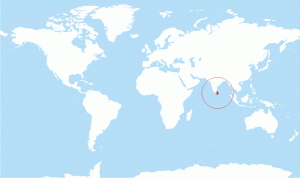
GEOGRAPHY AND CLIMATE.
The island consists mostly of flat-to-rolling coastal plains, with mountains rising only in the south-central part. Amongst these is the highest point Pidurutalagala, reaching 2,524 meters (8,281 ft) above sea level.
The climate of Sri Lanka can be described as tropical and warm. There are no seasonal variations .The bi-annual monsoon rains provide the only seasons a northeast monsoon (December to March) bringing unsettled weather to the north and east, and a southwest monsoon (June to October) bringing bad weather to the south and west.
Colombo and the South West experience rain from April to May and September to October. The East coast gets its share of rainfall from November to January. Being closer to the equator, the temperature is high throughout the year. The average temperature in Colombo is 27 degrees centigrade (80 degrees Fahrenheit). This is accompanied by high levels of humidity. However, in the different parts of the island, the temperature and the climate vary according to the terrain. The higher you go, the cooler it gets. In the mountainous regions of Nuwara Eliya, the temperature averages 16 degrees centigrade (61 degrees Fahrenheit).
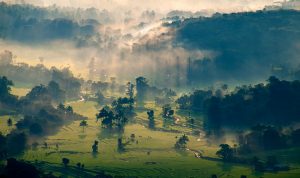
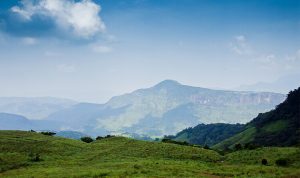
HISTORY
The chronicled history of Sri Lanka dates back to over 2,500 years. It had established trade and cultural links with many ancient civilizations. Throughout history, it has been known by different names. To the Greeks it was Taprobane, to the Arabs it was Serendib, to the Portuguese it was Ceilao, to the Dutch it was Zeylan, and to the British it was Ceylon. Sri Lanka was the ancient name meaning “The Resplendent Isle”.
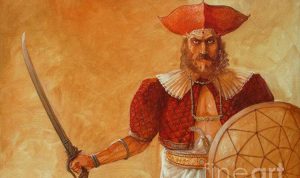
FLORA AND FAUNA
Despite its relatively small size, Sri Lanka possesses a high level of biodiversity. A noteworthy feature of Sri Lanka’s biodiversity is the remarkable high proportion of endemic species among its flora and fauna: 23% of the flowering plants and 16% of the mammals in the island are endemic. Sri Lanka has a wide range of topographic and climatic variation and this contributes to the special features of its biodiversity.
(Sri Lanka has been identified by the environment activist group Conservation International (CI) as one of 25 biodiversity hot spots in the world)
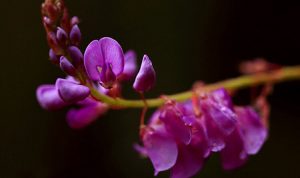
SRI LANKA AT A GLANCE
Official Name: Democratic Socialist Republic of Sri Lanka
Government Type: Republic
Location: Latitude 5° 55. to 9° 50. North, Longitude 79° 42. to 81° 52., 880km north of the equator
Dimensions: 430km North to South, 225km East to West
Administrative Capital: Sri Jayewardenepura
Commercial Capital: Colombo
Dimensions: 430km North to South, 225km East to West
Area: 65,525km
Terrain: Mostly low, flat to rolling plain; mountains in south-central interior
National Parks and Nature Reserves Area: 8,000sq.km
Coastline: 1,340km
Highest Mountain: Pidurutalagala, 2,524m
Highest Waterfall: Bambarakanda, 263m
Currency : Sri Lankan Rupee (LKR)
National Flower: The Blue Water Lily (Nymphaea stellata)
Population: 20,359,439
Population Growth Rate: 0.75%
Population Density: 325 people per sq km
Life Expectancy at Birth : 78.6 -Female, 72-Male
Literacy Rate : Female 90.8, Male 92.77
Ethnic Groups: Sinhala (74.9%), Sri Lanka Tamil (11.2%) , Moor (9.3%) , Indian Tamil (4.1%) (2012 census)
Religion: 70.1% of Sri Lankans were Theravada Buddhists, 12.6% were Hindus, 9.7% were Muslims (mainly Sunni), 6.2% Roman Catholic, 1.4 other Christians and 0.05% others.(2012 Census)
Time Zone: Sri Lanka Standard Time is five and a half hours ahead of GMT. (Allowance should be made for summer-time changes in Europe.)
International Dialing: +94
Electricity: 230 . 240 volts, 50 cycles AC. If you travel with a laptop computer bring a stabilizer
Economy: Sri Lanka’s most dynamic sectors are food processing, textiles and apparel, food and beverages, port construction, telecommunications, insurance and banking. In 2006, plantation crops made up only 15% of exports (90% in 1970), while textiles and garments accounted for more than 60%. About 800,000 Sri Lankans work abroad, 90% of them in the Middle East. They send home more than US$1 billion a year.
Labour Force: Labour population-52.3%,25.3%-Agricultural Sector,27.6%-Industry Sector,47.1%-Service Sector, Unemployement rate-4.8%
Agriculture & Products: Rice, Sugarcane, Grains, Pulses, Oilseed, Spices, Tea, Rubber, Coconuts, milk, Eggs, Hides, Beef, Fish
Industries: Processing of rubber, tea, coconuts, tobacco and other agricultural commodities, telecommunications, insurance, banking; clothing, textiles, cement, petroleum refining.
Exports:Textiles and apparel; tea and spices; diamonds, emeralds, rubies; coconut products, rubber manufactures, fish
Imports: Main import commodities are textile fabrics, mineral products, petroleum, foodstuffs, machinery and transportation equipment: $10.61 billion f.o.b. (2007 est.). Percentage of main commodities from main import partners: India 19.6%, China 10.5%, Singapore 8.8%, Iran 5.7%, Malaysia 5.1%, Hong Kong 4.2%, Japan 4.1% (2006)
Gross Domestic Product (GDP): Purchasing power parity 50.3 LCU per international dollars(2018),Official exchange rate 162.5 LCU per US dollars(2018),Real growth rate: 2.3% (2019) Per capita $3,741, composition by sector-Agriculture-7%,Industry-26.4%,Services-57.4%(2019)
Gross National Product (GNP): Sri Lanka is placed in 76th place in GNP figures of the world.s nations with LKR.9,608 296 Million(2020)
Flag Description: Yellow with two panels; the smaller hoist-side panel has two equal vertical bands of green (hoist side) and orange; the other panel is a large dark red rectangle with a yellow lion holding a sword, and there is a yellow bo leaf in each corner; the yellow field appears as a border around the entire flag and extends between the two panels
Industries: Processing of rubber, tea, coconuts, tobacco and other agricultural commodities, telecommunications, insurance, banking, clothing, textiles, cement, petroleum refining.
Exports:Textiles and apparel; tea and spices; diamonds, emeralds, rubies; coconut products, rubber manufactures, fish
Imports: Main import commodities are textile fabrics, mineral products, petroleum, foodstuffs, machinery and transportation equipment: $10.61 billion f.o.b. (2007 est.). Percentage of main commodities from main import partners: India 19.6%, China 10.5%, Singapore 8.8%, Iran 5.7%, Malaysia 5.1%, Hong Kong 4.2%, Japan 4.1% (2006)
Gross Domestic Product (GDP): Purchasing power parity 50.3 LCU per international dollars(2018),Official exchange rate 162.5 LCU per US dollars(2018),Real growth rate: 2.3% (2019) Per capita $3,741, composition by sector-Agriculture-7%,Industry-26.4%,Services-57.4%(2019)
Gross National Product (GNP): Sri Lanka is placed in 76th place in GNP figures of the world.s nations with LKR.9,608 296 Million(2020)
Flag Description: Yellow with two panels; the smaller hoist-side panel has two equal vertical bands of green (hoist side) and orange; the other panel is a large dark red rectangle with a yellow lion holding a sword, and there is a yellow bo leaf in each corner; the yellow field appears as a border around the entire flag and extends between the two panels
Industries: Processing of rubber, tea, coconuts, tobacco and other agricultural commodities, telecommunications, insurance, banking, clothing, textiles, cement, petroleum refining.
Exports: Textiles & apparel, tea, spices, gems & jewelry, coconut products, rubber manufactures, fish
Gross Domestic Product (GDP): Purchasing power parity: $81.29 billion (2007 est.). Official exchange rate: $30.01 billion (2007 est.) Real growth rate: 6.3% (2007 est.)
Gross National Product (GNP): Sri Lanka is placed in 76th place in GNP figures of the world’s nations with $22.8 billion (2005)